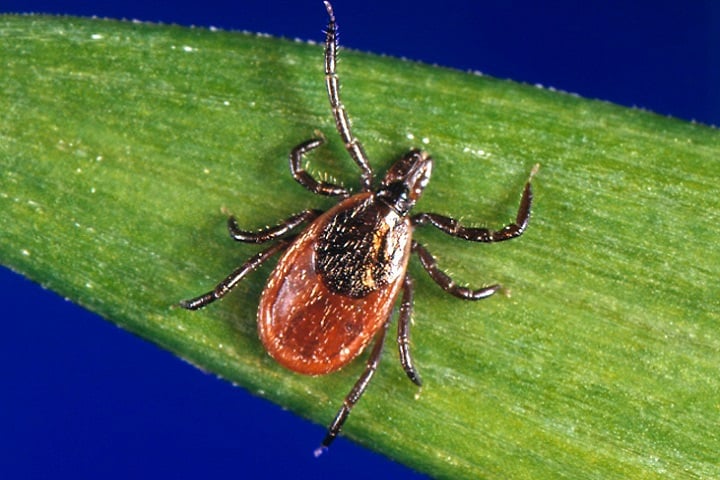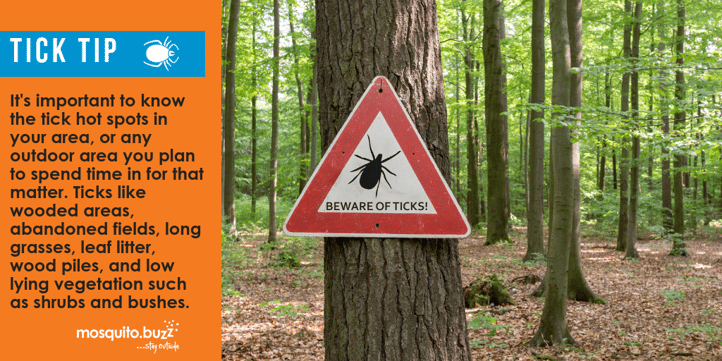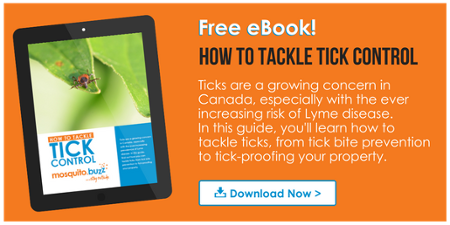
From coast to coast and peak to peak, Lyme disease is on the rise in Canada.
Lyme disease, caused by a type of bacteria called Borrelia burgdorferi, is transferred to humans through the bite of an infected blacklegged tick. Blacklegged ticks are known to become infected with Lyme disease by feeding on infected wild animals such as deer, birds, and small rodents, many of which can spread throughout the country by hitching rides on the backs of migratory birds.
Most humans and pets are infected through the bite of nymph tick, which are approximately the size of a poppy seed. Adult ticks, which are roughly the size of a sesame seed, can also spread Lyme disease.
Where in Canada Are You at Risk For Lyme Disease?
Unfortunately, most provinces in Canada are considered high risk areas for Lyme disease according to the Government of Canada. And really, is it any surprise? With its ample foliage, wooded areas and abundance of tick-carrying mammals such as deer and small rodents, Canada's natural splendor is often the perfect storm for human-tick interactions. Below are the provinces outlined on the Government of Canada website as being identified risk areas for ticks:
Manitoba
- Agassiz Provincial Forrest
- Assiniboine River (from Winnipeg to the west of Brandon)
- Beaudry Provincial Park
- Belair area
- Bellsite area
- Binscarth area
- Birtle area
- Buffalo Point area
- Crystal City area
- Eriksdale area
- Grand Valley Provincial Park
- Grunthal area
- Langford Trails
- Macdonald/ Delta Beach area
- McCreary area
- Minnedosa area
- Moose Lake Provincial Park
- Norris Lake Provincial Park
- parts of southern Manitoba along the border with the United States from south of Brandon to Lake of the Woods
- Patricia Beach Provincial Park
- Pembina escarpment
- Pembina Valley Provincial Park
- Pinawa area
- Rainbow Beach Provincial Park
- Roseau River area
- Sandilands Provincial Forrest
- Solsgirth area
- Souris area
- Sprucewoods Provincial Park
- Squirrel Hills Trails
- St Ambroise Provincial Park
- St. Malo Provincial Park
- Stuartburn area
- Tolstoi area
- Treherne area
- Turtle Mountain Provincial Park
- Vita/Arbakka area
- Wasagaming (Riding Mountain National Park) area
- Whitemud Watershed Wildlife Management Area
- Whiteshell Provicial Park (Falcon Lake, West Hawk Lake)
- William's Lake Provincial Park
- Winnipeg Beach area
- Winnipeg (areas within and around)
Ontario
- Along the north shores of Lake Erie and Lake Ontario
- parts of Thousand Islands National Park
- Kingston and surrounding area along the St. Lawrence Valley to the border with Quebec and northeast towards Ottawa
- Northwestern Ontario in the region of Lake of the Woods
- Pinery Park on the shore of Lake Huron

Quebec
- Montérégie (south of Québec)
- Southwest of Mauricie et Centre-du-Québec
- North and west of Estrie
- Southwest of Outaouais
New Brunswick
- Areas of Charlotte County
- Areas Saint John County
- Areas of Kings County
- Areas of Albert County
- Areas of Westmorland County
- Areas of York County
Nova Scotia
All of Nova Scotia is identified as Lyme disease risk areas. Again, full credit to the Government of Canada for this data.
Lyme Disease Symptoms
Lyme disease can have serious effects on people and pets, with the symptoms often differing from person to person. Ticks are very small and their bites are usually painless, so you may not know that you have been bitten until it's too late. Signs and symptoms of Lyme disease can include one or a combination of the following with varying degrees of severity:
- Skin Rash
- Dizziness
- Headache
- Abnormal heartbeat
- Fever or chills
- Muscle and joint pain
- Fatigue (tiredness)
- Paralysis
- Spasms or weakness
- Mental confusion
- Numbness or tingling
- Nervous system disorders
- Swollen lymph nodes
According to the Government of Canada website, some people with Lyme disease may have no or minimal symptoms, while others may suffer more severe symptoms from the bite.
Stay Outside... Stay Healthy™ with our mosquito.buzz Tick Control service. Lyme Disease is on the rise across Canada and is being spread by the increase in Black Legged Tick populations. With mosquito.buzz, you can eliminate the threat of tick infestations on your property and protect your family from the risks associated with them.



